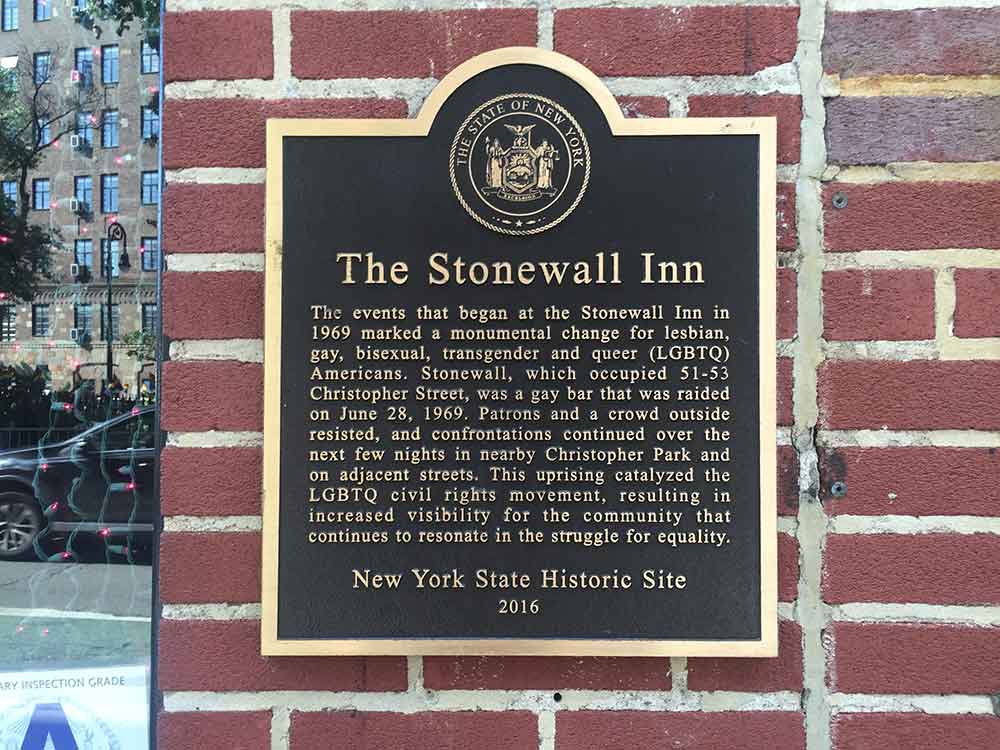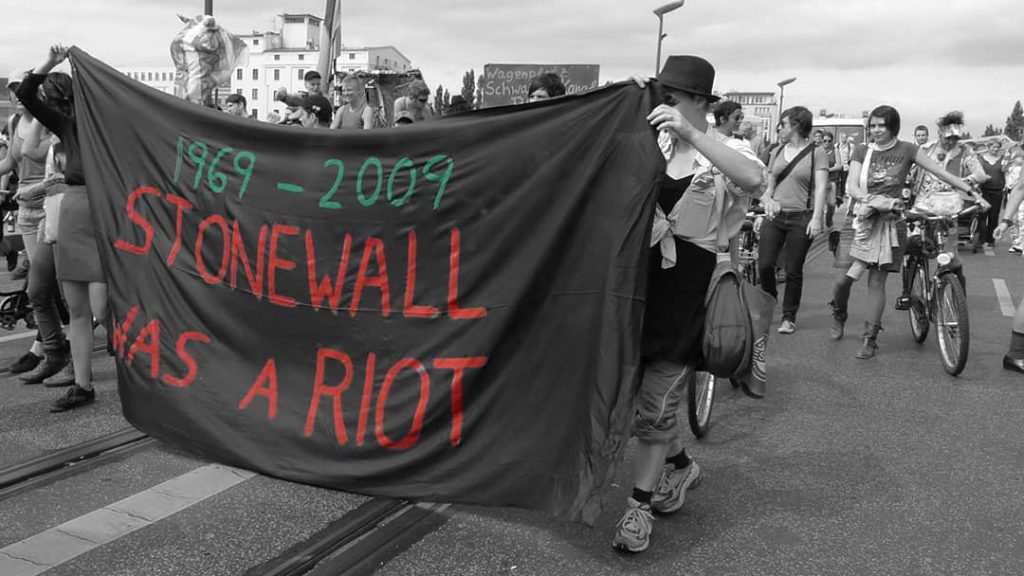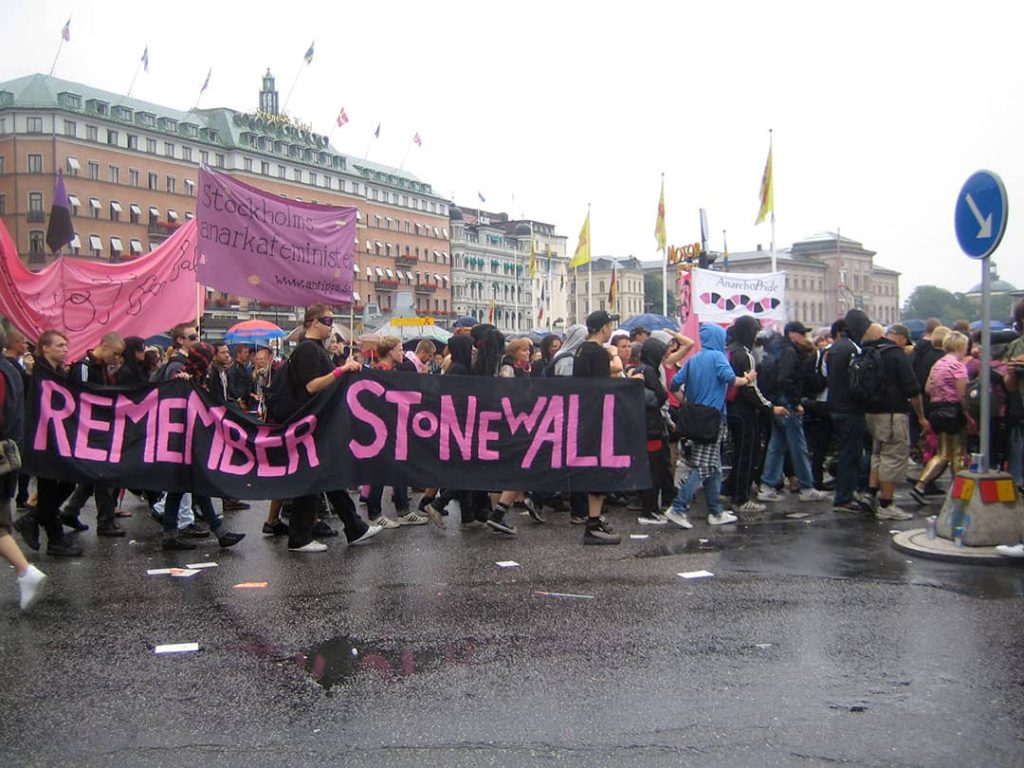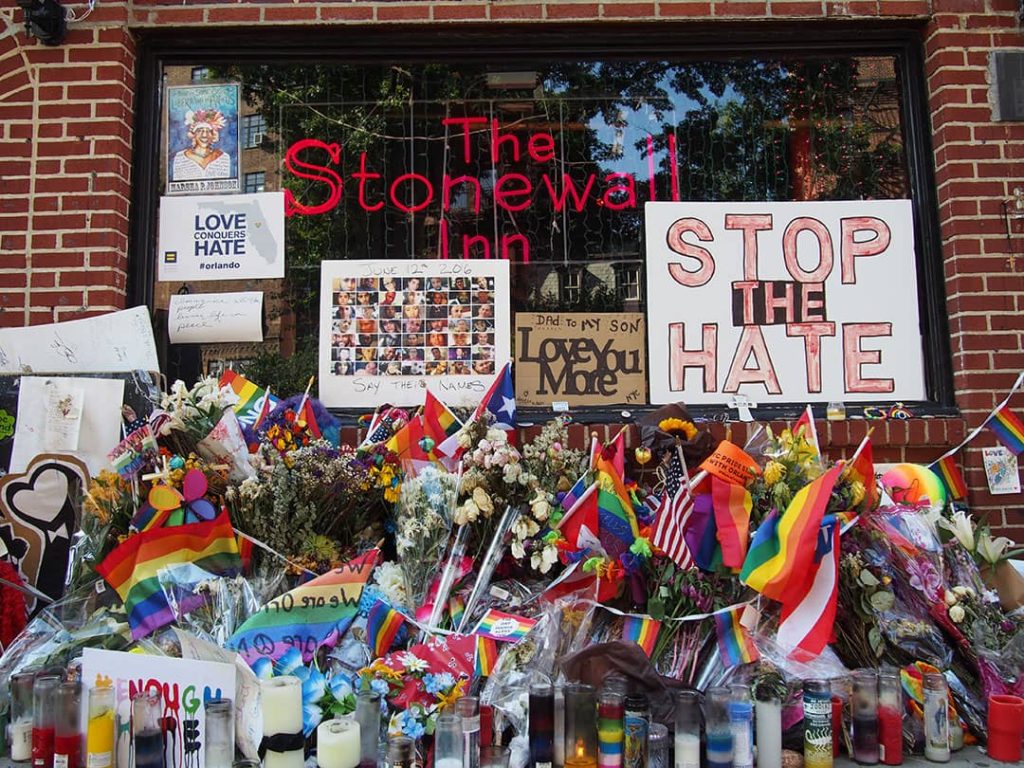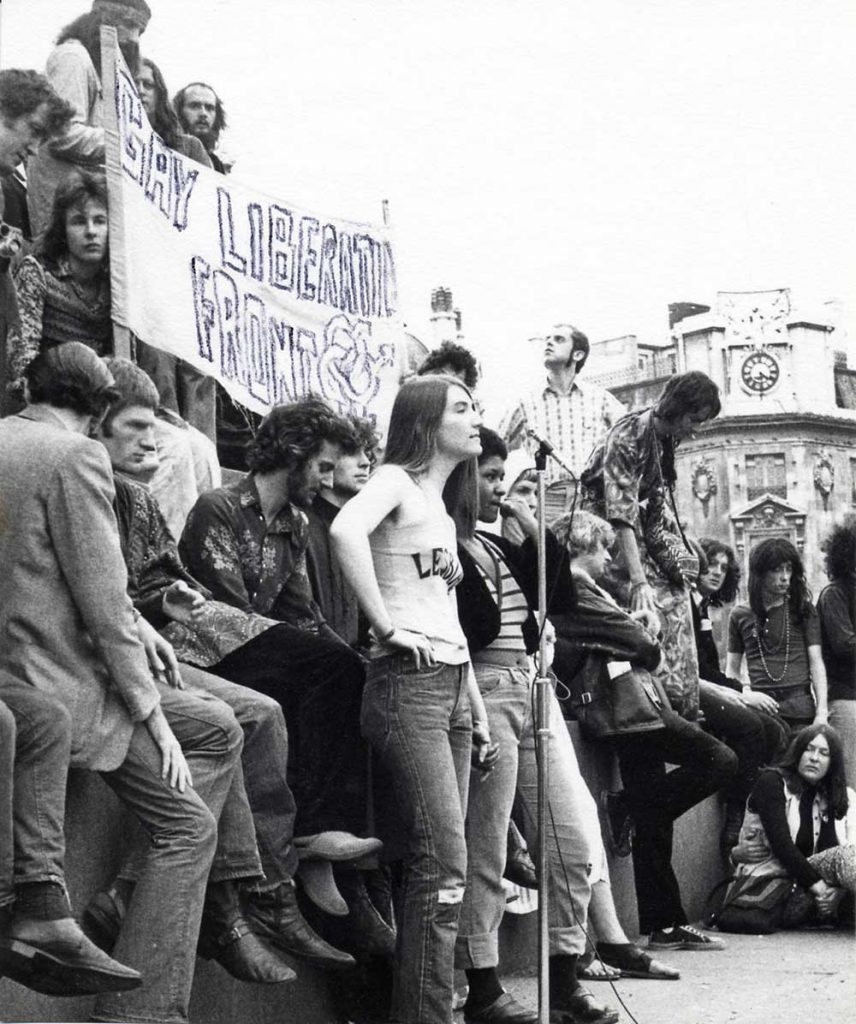
Stonewall Riots
The Stonewall Riots were a series of three public demonstrations that occurred on different nights in the week following a police raid on the Stonewall Inn in Manhattan, New York City, a raid that itself took place on the night of Friday June 27th to Saturday June 28th, 1969.
The Stonewall Inn at 51-53 Christopher Street, Greenwich Village, Manhattan, New York City was owned by the Genovese mafia. It had been run as a gay bar since 1966, but did not meet the legal operating requirements to be run as a bar on several accounts, having no alcohol licence, cold running water or fire exits. The absence of cold running water made for unhygienic glass-washing practices involving all glasses being roughly rinsed in the same tubs of dirty water. In view of all these deficiencies, the bar was only spared closure by the weekly payment of $3,500 in bribes to a corrupt police officer.
Both because the establishment was operating illegally and because its functioning as a bar frequented by LGBTQ+ people (albeit long before that term had come into use) was controversial in its day, bouncers pre-screened all prospective visitors before admission to try to avoid admitting undercover police officers. Additionally, leaks within the local police frequently tipped the management off about impending raids before they took place. However, there had been successful police raids from time to time, and at these the police had a habit of singling out all cross-dressing male patrons for arrest on account of their offending social morals, thereby showing intolerance to gay people’s rights to choose their own manner of dress, which enraged the gay community.
On the evening of June 27th, 1969, with no credible tip-off received, the bouncers inadvertently let in four plain-clothes cops. They called for back-up, and were joined by eight additional police officers at 1:20 a.m.. While they were attempting to arrest the 205 people present that night, a woman was struck by one of them with a baton when she complained that her handcuffs were too tight, and appealed to the gathering crowd for help, whereupon a riot broke out.
The crowd attracted by the commotion had swollen to over 500 people and began launching projectiles including coins, bricks, stones, refuse bins, bottles and rubbish at the police. Ten police officers barricaded themselves within the inn for their safety, while it continued to be pelted by the crowd, and they had to be rescued by the Tactical Patrol Force of the NYC Police Department, which first had to disperse to subdue the crowd outside.
The Inn itself suffered extensive damaged to its fixtures and fittings, with windows smashed and telephones, mirrors, jukeboxes and toilets all broken, but still managed to reopen the very next night. In spite of this quick reopening, the previous night’s raid and its aftermath sparked a second street protest outside the club that following night, commencing in the evening of Saturday June 28th, with many of the same protesters returning and being joined by other gay rights campaigners, some curious spectators, and, it has been alleged, police provocateurs from outside the gay community with other bones to pick against the police. It has been said that some of the crowd intercepted passing cars and buses and did not allow drivers to pass unless they voiced support for the demonstration. Bins were set on fire in the streets, and clashes with police occurred until 4 a.m..
The following Wednesday, July 2nd, a local rag called the Village Voice ran disparaging reporting on the previous weekend’s demonstrations, using highly insulting, vulgar terms of abuse to refer to the gay demonstrators. This incited an angry mob to gather around the paper’s offices that night, threatening to burn them down. Another street battle with the police ensued, leading to five arrests and multiple injuries, although it lasted for only about an hour.
Some of the older generation of the gay community in New York City disapproved of the riots, feeling that they held back the cause of the acceptance and integration of homosexual people in society by adopting violent methods. They had been represented by the Mattachine Society, whose focus since 1953 had been on gaining respect and on successful social assimilation. However, in the aftermath of the Stonewall riots, much of the younger generation of the gay community in the United States wanted a more radical approach to tackling social exclusion and prejudice by confronting the authoritarian systems that allowed and enforced them; and with this aim in mind, the Gay Liberation Front was formed by the end of July, heralding the start of a new era of intensified struggle for gay rights in American society.
